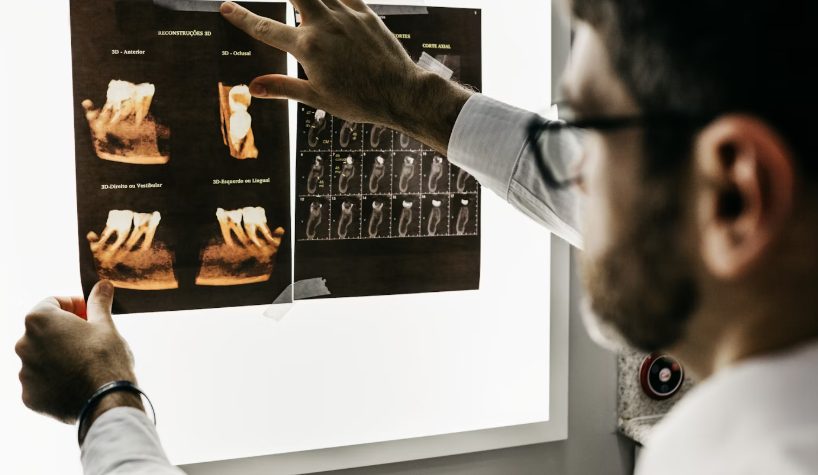
@ShahidNShah


The topic of sedation dentistry’s safety is of particular relevance to patients in San Antonio. As dental procedures become increasingly sophisticated, the use of sedation techniques has grown correspondingly. The question, then, is how safe is this practice? Despite stringent regulations and rigorous professional training, apprehensions remain. Let’s unpack the complexities surrounding the safety measures, potential risks, and the stringent regulations governing sedation dentistry, with a particular focus on what this means for patients in San Antonio.
While many people may not be familiar with the concept, sedation dentistry plays an integral role in modern dental care. It mitigates patient anxiety, facilitates smoother procedures, and allows dentists to perform complex treatments efficiently. Unfortunately, several sedation myths have proliferated, leading to unwarranted fear and confusion. For instance, some believe it involves being unconscious, when in reality, most forms only induce a relaxed state. Patient experiences further debunk these misconceptions, as many report feeling comfortable and calm during their procedures. Therefore, understanding the truth about sedation dentistry is essential for patients to make informed decisions about their dental care. Professionals continue to advocate for clear communication to dispel these myths, and emphasize the safety and benefits of sedation dentistry.
Dental sedation encompasses a variety of techniques, each with its unique approach to helping patients relax during dental procedures. The most common methods include oral sedation and the use of nitrous oxide, also known as laughing gas. Oral sedation involves the administration of sedative drugs, typically in pill form, which help patients to reach a state of moderate sedation. On the other hand, nitrous oxide is a gas that is inhaled through a mask and offers a lighter level of sedation. These methods are widely used due to their efficacy in reducing anxiety and discomfort. The choice of sedation type is often determined by the patient’s overall health, anxiety level, and the complexity of the dental procedure.
The administration of dental sedation requires a meticulous process carried out by highly trained professionals. This process involves a series of well-defined administration techniques meant to guarantee safety and efficacy. Key professionals include dentists, anesthesiologists, and dental hygienists, all of whom have specific professional qualifications.
The responsibility of these professionals extends beyond mere administration. It involves patient evaluation, choice of sedation, and monitoring during and after the procedure. Dentists and anesthesiologists typically undergo rigorous training in pharmacology and physiology to understand the effects of sedative medications. Dental hygienists often assist in monitoring the patient’s essential signs and comfort.
This competent team, equipped with the requisite knowledge and skills, guarantees the safe and effective delivery of a sedation dentist in san antonio. Their expertise forms the bedrock of the administration process in sedation dentistry.
In this segment, we will discuss the critical safety measures in sedation dentistry, a topic of utmost importance to both practitioners and patients. This includes a thorough understanding of the potential risks associated with sedation dentistry, the rigorous patient monitoring protocols in place, and the necessary preparedness for emergency responses. Each of these facets plays a pivotal role in ensuring the safety and efficacy of sedation in dental procedures.
While sedation dentistry has transformed the dental experience for many, it is vital to understand the associated risks to guarantee patient safety. These include possible allergic reactions, over-sedation, and potential side effects like nausea or vomiting. It is important to recognize that these risks are generally low, particularly when administered by a trained professional. Patient anxiety can escalate if these risks are not communicated effectively, reducing the benefits of sedation. It is thus imperative that dentists have thorough discussions with their patients, exploring potential sedation alternatives if needed. This way, patients can make informed decisions about their treatment, ensuring a safer and more comfortable dental experience. Professional oversight and stringent safety measures are key to minimizing these risks.
How does one guarantee the safety of patients during sedation dentistry? The answer lies in rigorous patient monitoring protocols. Advanced monitoring equipment is integral to guaranteeing patient safety throughout the procedure. These devices continuously track essential signs such as heart rate, blood pressure, and oxygen saturation levels, allowing dental professionals to detect any minor changes that may indicate a problem. The real-time data provided by this equipment enables swift, preventative interventions if necessary. Additionally, a trained professional is always present to interpret the data, adding an extra layer of safety. This combination of cutting-edge technology and expert oversight guarantees that sedation dentistry is not only effective, but also safe for all patients.
Guaranteeing the safety of patients during sedation dentistry extends beyond continuous monitoring; it also involves thorough emergency response preparedness. This critical aspect of patient care is backed by rigorous training and regular emergency drills to guarantee swift, appropriate action during potential medical crises.
Dental professionals must have in-depth knowledge of the pharmacology of sedation agents, and they should be well-trained in managing all possible sedation-related medical emergencies. This includes airway management, cardiovascular support, and rapid response training for situations such as allergic reactions.
Moreover, the dental office should be equipped with emergency medical equipment and medications, and all staff should be trained in their use. By incorporating these safety measures, San Antonio dental practitioners can help guarantee the wellbeing of their patients during sedation dentistry.
Is it not essential, as with any medical procedure, to comprehend the potential risks and side effects when considering sedation dentistry? While it offers significant benefits for anxiety management, patients must also be aware of potential complications. These may include nausea, dizziness, and, in rare cases, allergic reactions. Patient education is key to understanding these risks, ensuring informed decision-making. Dental professionals should clearly explain the sedation process, possible side effects, and the likelihood of their occurrence. Furthermore, they should discuss the patient’s medical history to assess the risk of adverse reactions. Despite these potential risks, with careful patient selection and monitoring, sedation dentistry remains a safe and effective tool for managing dental anxiety. However, understanding these risks is a critical part of the decision-making process.
Before undergoing sedation dentistry, adequate preparation is essential to optimize safety and efficacy. This involves a clear understanding of the pre sedation checklist, and excellent patient communication. The pre sedation checklist covers critical aspects like a thorough medical history review, assessment of the patient’s current physical status, and a discussion about the patient’s tolerance for sedatives. Patients should also be instructed to abstain from eating or drinking a few hours before the procedure. Effective patient communication is key in preparing for sedation dentistry. Dentists should clearly explain the process, potential risks, and aftercare requirements. Patients are encouraged to ask questions to fully understand what to expect. This thorough preparation promotes safety and successful outcomes in sedation dentistry.
In the domain of sedation dentistry, it is essential to understand the local regulations that govern its practice. Particularly, the dental laws in San Antonio provide an extensive framework that dictates the use of sedation in various dental procedures. Equally important is the understanding of sedation protocols, which guarantee patient safety and the efficacy of the dental procedure.
Steering through the intricacies of San Antonio’s dental laws, one can discern a robust framework directed at ensuring the safety of sedation dentistry practices. These San Antonio regulations have demonstrated a commitment to high dental sedation standards, with strict requirements for training, licensing, and the administration of sedation. All dentists who practice sedation dentistry must be adequately trained and licensed, ensuring they possess the necessary skills and knowledge to perform sedation safely and effectively. Further, these laws mandate the use of approved sedation techniques and equipment, reinforcing safety measures in dental practices. Ultimately, San Antonio’s dental laws reflect an extensive approach to patient safety, ensuring that the benefits of sedation dentistry are delivered without compromising patient health and wellbeing.
How do local regulations guide the protocols of sedation dentistry? The local regulations in San Antonio guarantee that dental professionals are following approved sedation techniques to uphold patient safety and well-being. These regulations are designed to govern the administration of sedatives, with protocols aimed at minimizing patient anxiety and guaranteeing a painless dental procedure. The protocols cover various aspects, from patient evaluation and sedation procedure to monitoring and recovery. They require dentists to receive specialized training in sedation techniques and maintain a patient-centered approach. It is essential for patients to understand that these regulations are in place not only to protect them but also to enhance their overall dental experience by reducing anxiety and discomfort.
Insurance coverage for sedation dentistry varies greatly among providers. It’s often considered a non-essential procedure. Patients should consult their individual insurance policies to determine coverage for sedation costs.
The sedation duration varies per individual, typically lasting a few hours post-procedure. It’s advised that patients arrange transport home and rest for the remainder of the day to guarantee a safe and full recovery.
Yes, there are alternatives to sedation dentistry including nitrous oxide (laughing gas) and oral conscious sedation, which involve lighter levels of sedation and can alleviate patient anxiety without the need for heavier sedation methods.
Sedation dentistry is often recommended for children experiencing significant anxiety. However, strict adherence to sedation guidelines is essential to guarantee their safety. It’s important to discuss individual needs and concerns with the dentist beforehand.
Post-sedation dentistry, patients can expect a period of drowsiness. Recovery expectations include rest, limited physical activity, and close monitoring. Adherence to post-procedure care, such as gentle oral hygiene, is essential for ideal healing.

Health is the most important thing for each of us. Medical procedures can help improve and strengthen it. Hyperbaric oxygen therapy is a medical treatment where a patient inhales pure oxygen under …
Posted Feb 7, 2025 Wellness & Prevention
Connecting innovation decision makers to authoritative information, institutions, people and insights.
Medigy accurately delivers healthcare and technology information, news and insight from around the world.
Medigy surfaces the world's best crowdsourced health tech offerings with social interactions and peer reviews.
© 2025 Netspective Foundation, Inc. All Rights Reserved.
Built on Apr 17, 2025 at 6:07am